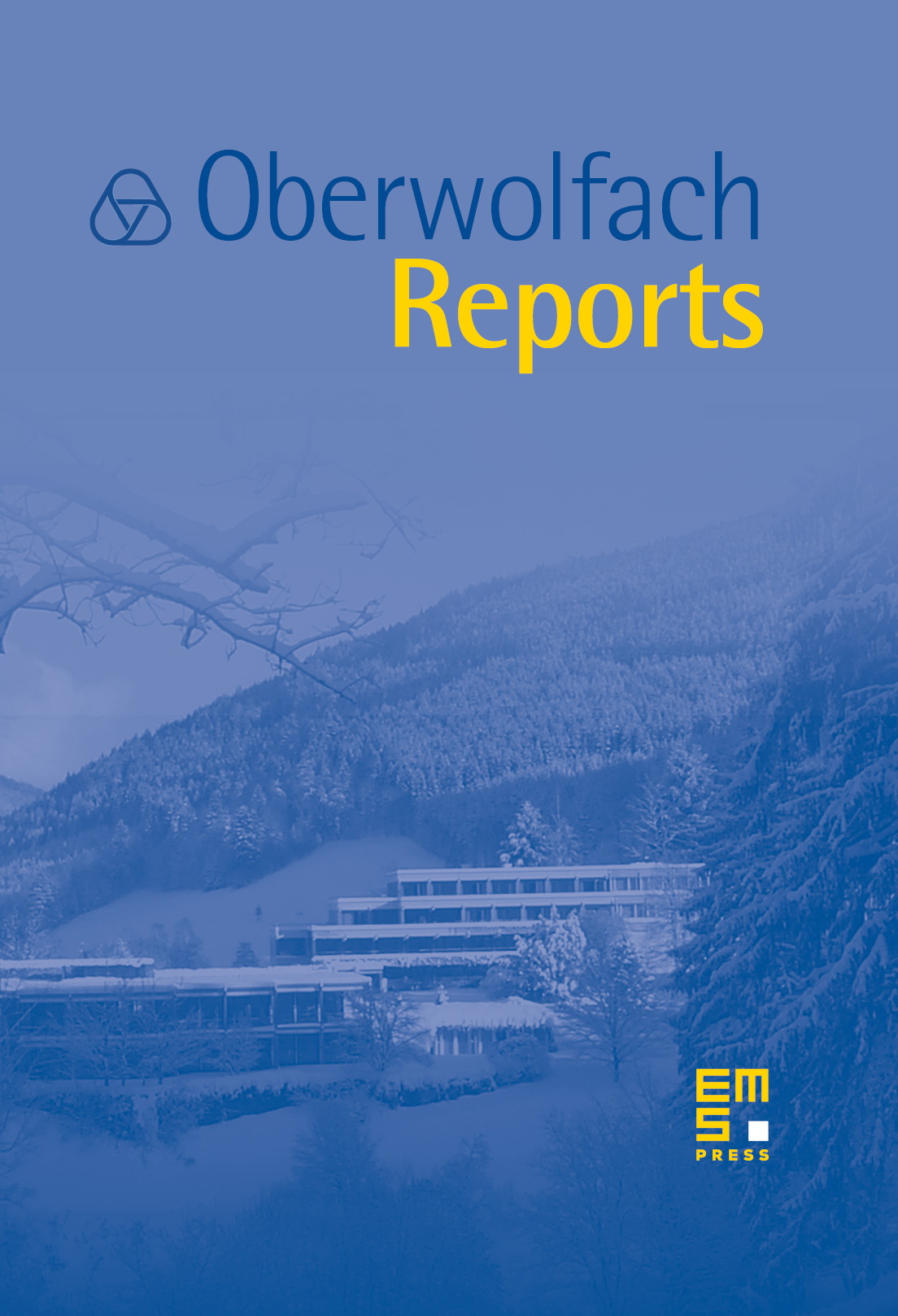Mini-Workshop: Control of Free Boundaries
Charles M. Elliott
University of Warwick, Coventry, UKMichael Hinze
Universität Hamburg, GermanyVanessa Styles
University of Sussex, Brighton, UK

Abstract
This meeting was attended by 17 participants from Austria, Germany, and Great Britain with expertise from the three areas of optimal control of PDEs, modeling involving free boundary problems and the mathematical and numerical analysis of free boundary problems. Apart from discussing current problems, issues and techniques from the the differing communities the focus of the workshop was set on defining model problems in free boundary control in order to develop the necessary analytical and numerical techniques required to successfully tackle new emerging classes of problems. The governing equations for the dynamics of the interfaces in many of these applications involve surface tension expressed in terms of the mean curvature and a driving force. Here the forcing terms depend on variables that are solutions of additional pdes which hold either on the interface itself or in the surrounding bulk regions. Examples in the case of solid-liquid interfaces in crystal growth include adjusting the interface to a prescribed shape or ensuring homogeneous doping at the interface. Whereas in the case of epitaxial growth the optimal design would be to ensure a given smoothness of the forming surface. Further examples of control of free boundaries are
- establishing temperature gradients at triple points in Czochralski growth,
- coating with uniform thickness.
The presentations by Emmerich, Griesse, Pinnau, Stinner and Welford concerned modeling and applications for optimal control involving free boundaries. Bänsch, Dziuk and Elliott and Styles gave talks concerning the numerical and mathematical formulations of free boundary problems. Finally, Deckelnick, Garcke, Hintermüller, Hinze, Kunisch and Ziegenbalg focused on the mathematical and numerical analysis of optimal control problems involving free boundaries.
Discussions during the workshop established the following paradigm optimal control problems involving free boundaries:
- Control of mean curvature flow
Here we are concerned with the interface evolution equation
where is the normal velocity of a surface whose mean curvature is . Forced mean curvature flow is considered as a subproblem of curvature driven surfaces occurring in Stefan problems. Also omitting the curvature term leads to control of an eikonal equation. The field variable can be used to control the location of the surface. This evolution law as it is posed does not involve field equations off the interface. In certain circumstances the solution can be written as a graph in which case one is controlling a quasi-linear parabolic equation of geometric type. On the other hand it can also be formulated as a level set equation. During the workshop it became clear that each approach to describing the free surface leads to mathematical and numerical issues characteristic to the description of the free boundary.
- Control of the Hele–Shaw fluid injection problem
Denoting by the pressure in a fluid occupying a two dimensional domain we have
where is the normal velocity of an advancing front separating the wet and dry regions, is the normal to and the fluid velocity is . The boundary of the fluid region has a fixed portion on which the flux may be prescribed so that
This prescribed flux may then be used to control the location of the free boundary and possibly the location of so called weld lines where two portions of fluid meet. Using the transformation, [4],
results in an obstacle problem for in which time becomes a parameter. There is also the following enthalpy formulation
where is the Heaviside function.
Thus problem can be used to understand the issues surrounding the optimal control of obstacle problems and degenerate parabolic equations. See [5] for an account of mathematical and numerical approaches to models involving free boundaries being defined by level sets of solutions of variational inequalities and nonlinear degenerate parabolic equations.
During the workshop issues relating to solving obstacle problems by methods such as semi-smooth Newton methods were discussed.
- Control of convection–driven free surface Stokes flow
Control of convection–driven Stokes flow serves as model for control of a more realistic engineering oriented fluid flow problem with a free surface. Denoting by the the velocity, pressure, and temperature of the fluid in the domain with a free top surface and fixed boundary we have
As temperature boundary condition we may take
where denotes the environmental temperature. At we impose a no-slip condition
With the total stress tensor
we have
at the free surface, where denotes the jump of a quantity across the free surface, denotes the mean curvature of the free surface and and are surface normal and tangent vectors, respectively. In order to fix the solution, the free surface is required to be normal to the fixed boundary of the container and the volume of fluid is prescribed.
Based on this system of equations one may formulate optimal control problems. The environment temperature or additional volume sources in the Stokes or heat equation may serve as control variables. As objectives, one can think of standard tracking-type functionals, involving the fluid velocity and/or the temperature, accounting for flat free surfaces, say. A more general MHD model which contains the model above as a special case is presented in the contribution of Roland Griesse.
Surveys and articles concerning the mathematical and numerical approaches to optimal control of free boundary problems may be found in the conference proceedings[6, 7, 8]. The level set approach to related problems of optimal design are surveyed in [2]. The book [1] contains theoretical results for optimal control of variational inequalities. Also we mention a survey of numerical methods for interface evolution involving curvature, [3]. Finally we remark that many recent references concerning the issues of the workshop are provided at the end of the each extended abstract.
Cite this article
Charles M. Elliott, Michael Hinze, Vanessa Styles, Mini-Workshop: Control of Free Boundaries. Oberwolfach Rep. 4 (2007), no. 1, pp. 447–486
DOI 10.4171/OWR/2007/08